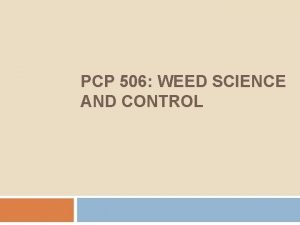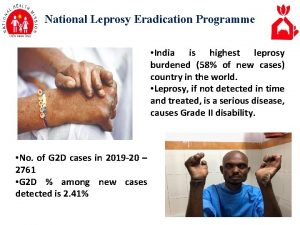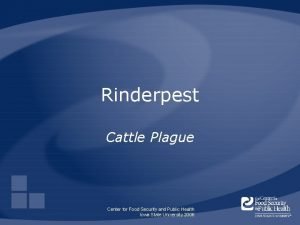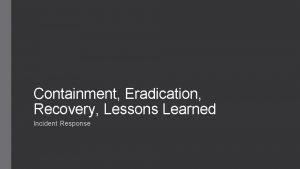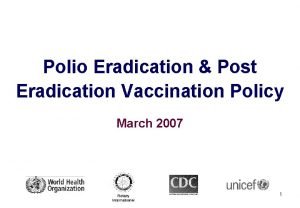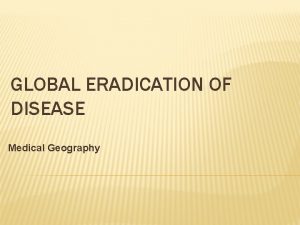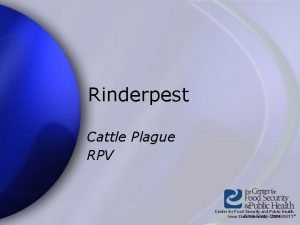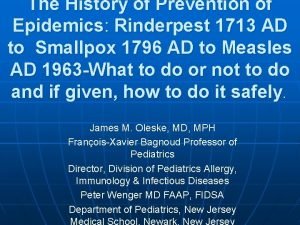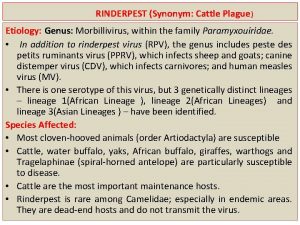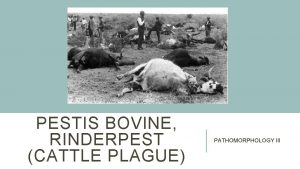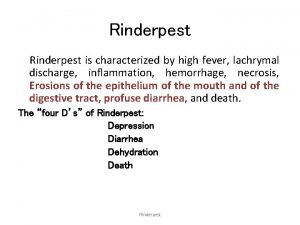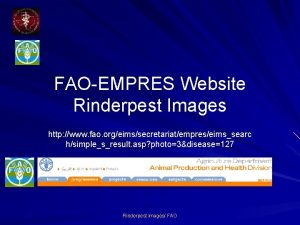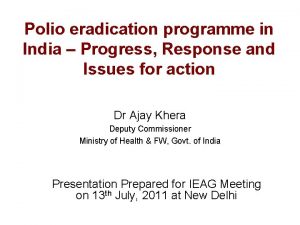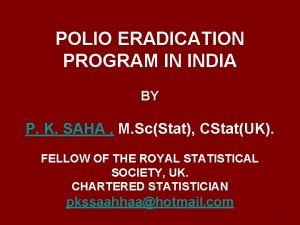Glimpses of Rinderpest Eradication in India Using Mass















- Slides: 15

Glimpses of Rinderpest Eradication in India Using Mass Vaccination Prof. (Dr. ) M. P. Yadav Secretary, National Academy of Agricultural Sciences, New Delhi Ex-Vice Chancellor, SVPUAT, Meerut Ex Director & Vice Chancellor, IVRI Deemed University, Izatnagar

Rinderpest (Cattle Plague) v Devastating disease (90 -100% mortality) v Viral (RNA) disease of Bovines & Caprines v Was responsible for creation of Ø Ist Veterinary School in France at Lyon (1762) Ø Public Veterinary Services in Europe Ø Indian CIVIL Veterinary Services – 1891 Ø Indian Cattle Plague Commission (1868 -71) Ø Establishment of IBL (IVRI) – 1889 on CPC Recommendation Ø Establishment of OIE (1924) in Paris Contd……

Rinderpest (Cattle Plague) Contd…. . • Origin is believed to be in Asia • In India first recorded in Assam in 1752 • Huge Economic losses in Ruminants and Pigs • Major cause of Rural Poverty prior to availability of vaccine (1928)

Rinderpest Havoc


• CPC Report 1871, confirmed RP in India • IBL shifted to Mukteswar in 1893 (now IVRI) • Research focus on Rinderpest • Prof. Robert Koch visited Mukteswar in 1897 and worked on RP using bile of infected animals as vaccine • Anti-rinderpest serum developed at IVRI in 1899 • Passive immunization - 2 weeks immunity • Serum simultaneous method of immunization

Contd…. . Risk of disease spread by using live virus in SS vaccine GTV vaccine developed by J. T Edwards in 1927 GTV gave life long immunity Replaced SS method in 1931 NREP launched in 1954 TCRP vaccine introduced in 1966 NPRE initiated in 1992 - Zonal approach to eradicate Focused vaccination + zoo sanitary measures + sero monitoring • 1600 millions vaccinations between 1956 -1998 • Last outbreak of RP in India- 1995 (TN) • •

Contd… • No vaccination after 2000 • Freedom from disease in 2004 • Freedom from infection in 2006 • FAO declared Global Eradication (28 June 2011) • India Succeeded without Slaughter Policy • Second viral disease and first animal viral disease eradicated globally. • PPR National control programme now in hand.

Impact of Rinderpest Control on Green Revolution • Rinderpest eradication/control helped in Green and White Revolutions. • Increase in milk production 2. 99 times between 1955 to 1995 and 4. 796 time by 2006 • Meat production increased 17. 99 times (1959 -1995) • Increase in income from milk 102. 6 times (1950 -51 to 2005 -06) • Increase in income from meat 193. 96 times (1950 -51 to 2005 -06) • Additional food (Milk, Meat) worth 289 billion US dollars produced between 1965 -1968.

The PPR Connection • • • PPR Virus is also Morbillivirus Antigenically Similar to Rinderpest Virus Rinderpest Vaccine cross - protect against PPR Development of PPR vaccine Development of Differential diagnostic test for PPR & RP



Is no sphere has scientific research conferred greater benefits on agriculture than by the provision of means of controlling livestock diseases. (Royal Commission on Agriculture )

All the extra food required to meet the current world shortfall could certainly be provided if the annual losses due to animal diseases and parasitism are effectively controlled. (Chief, Animal Production and Health, FAO)

Thanks
 Glimpses of india
Glimpses of india H pylori eradication therapy
H pylori eradication therapy Edaphic factors affecting crop production
Edaphic factors affecting crop production National leprosy eradication programme ppt
National leprosy eradication programme ppt Rinderpest virus
Rinderpest virus Containment eradication
Containment eradication My inner landscape essay 400 words
My inner landscape essay 400 words Glimpses of god
Glimpses of god Stoichiometry examples
Stoichiometry examples Atomic mass
Atomic mass Relative atomic mass of beryllium
Relative atomic mass of beryllium Calculating percentage composition by mass
Calculating percentage composition by mass Inertial mass vs gravitational mass
Inertial mass vs gravitational mass Grams to moles
Grams to moles Calculate moles from grams
Calculate moles from grams Molar mass unit
Molar mass unit


